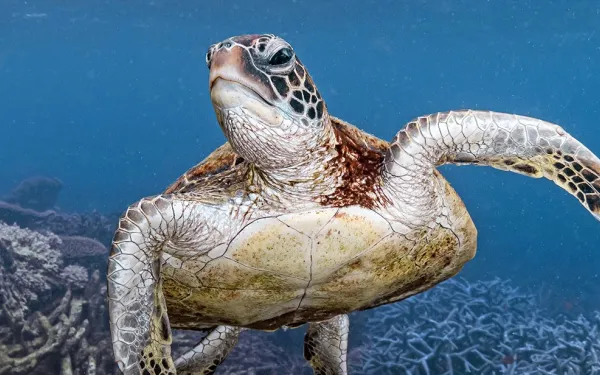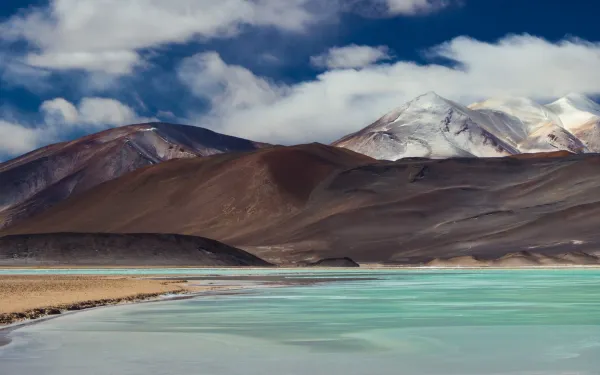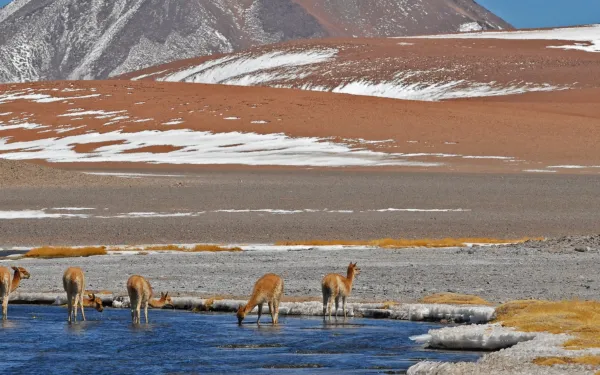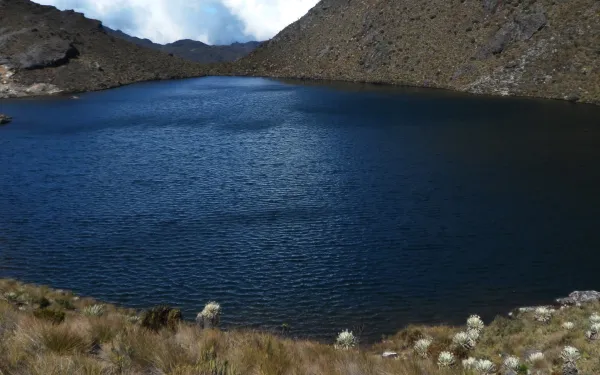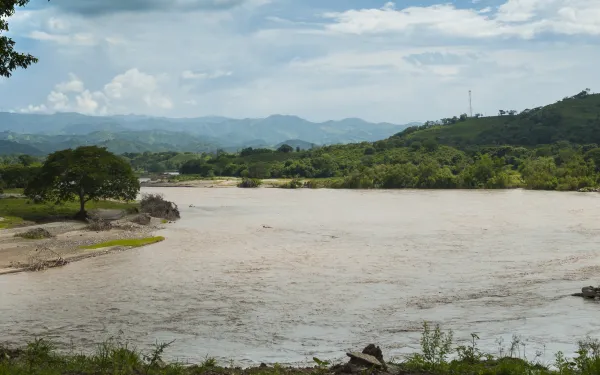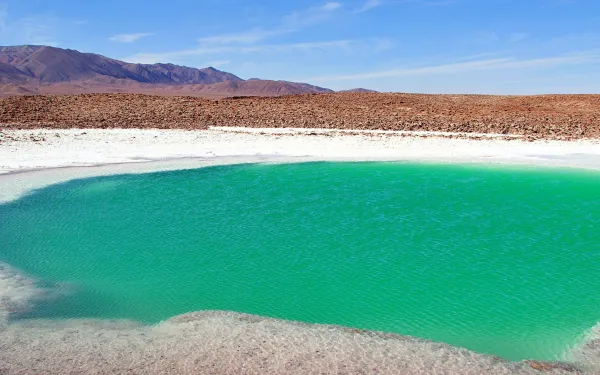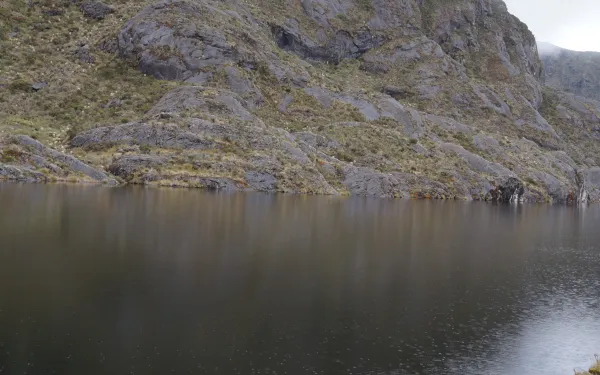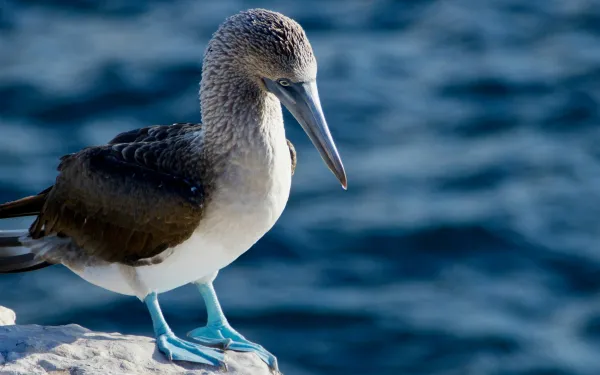
10 environmental news stories to end 2025 on a hopeful note
We are nearing the end of a complex year, and taking stock seems daunting. Multilateralism is faltering as environmental crises worsen and urgently demand decisive action.In such turbulent times, it is worth taking stock of what we, as humanity, have achieved in building a more just and sustainable world for all who inhabit it.2025 will be remembered as the year when an underwater expedition thrilled us in real time, when we celebrated the implementation of agreements to protect life in the ocean, and when international court rulings transformed the pursuit of justice to protect people and the environment from the climate emergency.These are some of the environmental victories that this year has left us with, and they deserve to be celebrated, just as we honor the fire that shines in the darkness. Because even with small lights, we can continue to illuminate a path of hope toward environmental and climate justice. 1. International courts issued landmark decisions for climate justiceThe Inter-American Court of Human Rights and the International Court of Justice released their respective advisory opinions on the climate emergency. Both decisions clarified the obligations of states to protect the rights of people and nature in the face of the climate crisis.These decisions are part of an unprecedented global movement for climate justice, which also includes the advisory opinion issued in 2024 by the International Tribunal for the Law of the Sea and similar future decisions, such as the one expected from the African Court on Human and Peoples' Rights.Learn More: Dialogue Earth 2. Climate litigation exceeded 3,000 cases worldwideClimate litigation reached 3,099 cases worldwide, according to a report by the Sabin Center for Climate Change Law and the United Nations Environment Program. Although climate litigation in countries in the global south is still in the minority (9.8% of the total documented), it has grown steadily. Brazil stands out as the third country with the most cases in the world (135), and other Latin American countries (Mexico, Colombia, Argentina, and Chile) are among the top 15 with the most cases reported.This growth demonstrates the increasing use of strategic litigation to promote concrete action on the causes and consequences of the climate crisis.Learn More: Sabin Center for Climate Change Law 3. Colombia declared its part of the Amazon free from oil and large-scale mining activitiesDuring the 30th UN Climate Change Conference (COP30), Colombia declared the entire Colombian Amazon region a zone free from oil and large-scale mining activities, announcing it as a "reserve zone for renewable natural resources."The decision implies an unprecedented limitation on the expansion of mining and hydrocarbon activities in more than 48 million hectares, equivalent to 7% of the entire Amazon region. It is also a call to other Amazonian countries to follow suit.Learn More: InfoAmazonia 4. Countries create a global mechanism to promote a just energy transitionAn important step forward at COP30 was the adoption of the Belém Action Mechanism, created within the framework of the Just Transition Work Program.The mechanism will function as a coordinating space to centralize global initiatives, offer technical assistance, and strengthen international cooperation. It is an achievement driven by civil society to promote ambitious climate action and a transition that does not repeat the mistakes of the fossil fuel era.Learn More: AIDA and The Climate Reality Project América Latina 5. An underwater expedition in Argentina marked a scientific and technological milestoneThe expedition "Underwater Odel Plata Canyon: Talud Continental IV," led by scientists from Argentina's National Scientific and Technical Research Council, in collaboration with the Schmidt Ocean Institute, explored the deep ocean in the Mar del Plata submarine canyon for 21 days, while broadcasting live on YouTube and Twitch.The result: 40 new marine species and an unexpected diversity of cold-water corals were discovered, findings that were seen and celebrated in real time by millions of people.Learn More: CONICET 6. The High Seas Treaty will finally enter into forceIn a process that took more than two decades, the High Seas Treaty this year reached the 60 ratifications needed to trigger its entry into force, which will occur on January 17, 2026. This binding agreement allows for the protection of the part of the ocean outside of national boundaries, almost half of the planet, through the creation of marine protected areas in international waters and the conduct of environmental impact assessments of planned human activities on the high seas. This is a historic milestone for the protection of the ocean and the well-being of millions of people in Latin America and around the world.Learn More: AIDA 7. Implementation begins on agreement ending harmful fisheries subsidiesThe World Trade Organization's Agreement on Fisheries Subsidies came into force in September this year. It is the first multilateral trade treaty to prioritize environmental sustainability, as well as a milestone in ensuring food security and the livelihoods of coastal communities.The agreement prohibits government subsidies that promote illegal fishing and the depletion of overexploited stocks.Learn More: WTO 8. Green sea turtles are no longer considered an endangered speciesAfter decades of decline, the population of green sea turtles is recovering. The International Union for Conservation of Nature no longer considers them endangered and has reclassified them as a "species of least concern."This sea turtle population has increased thanks to decades of conservation work to protect nesting areas, reduce capture, and prevent bycatch. AIDA was part of these efforts, protecting them in the 1990s from hunting—which was legal at the time—in Costa Rica.Learn More: AIDA and IUCN Red List 9. Protection of key ecosystems around the world, including the Galapagos, is growingUNESCO added 26 new biosphere reserves in 21 countries, the highest number in 20 years, and approved the expansion of 60,000 square kilometers in the Galapagos Biosphere Reserve in Ecuador to incorporate the Hermandad Marine Reserve. This will protect the area where dozens of marine species, many of them protected, transit, and which is considered one of the most diverse ocean corridors in the world.Learn More: LaderaSur and Government of Ecuador 10. Deforestation decreased in Afro-descendant territories in Latin AmericaAfro-descendant communities in Brazil, Colombia, Ecuador, and Suriname have significantly reduced their deforestation rates, according to new research from Conservation International.The study showed that Afro-descendant communities are critical to environmental conservation, as 56% of their lands are located in the 5% of the world with the highest biodiversity.Learn More: Conservation International
Read more
